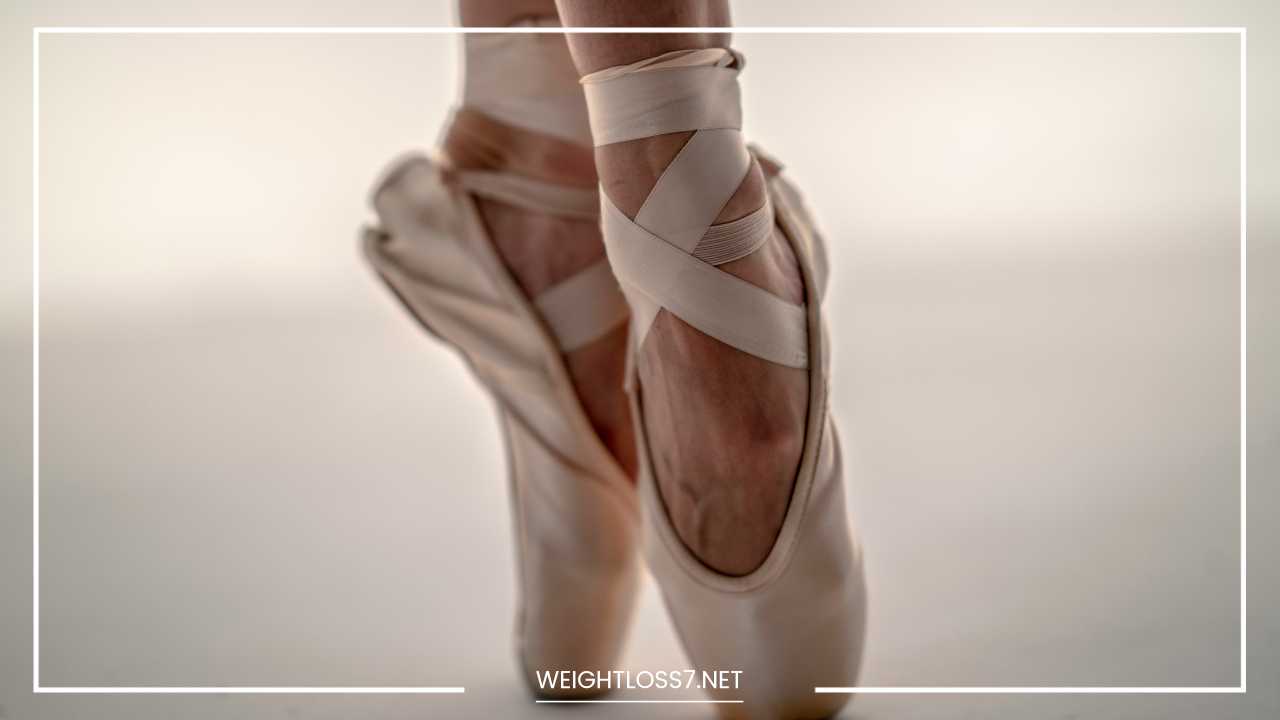How Ballet Can Help You and Your Health

Ballet
How Ballet Can Help You and Your Health: A Guide for Beginners and Beyond
Ballet. The word itself evokes images of ethereal grace, seemingly impossible strength, and an aura of artistic accomplishment. But ballet is more than just tutus and tiaras, graceful leaps, and dramatic narratives.
It’s a demanding yet rewarding art form that offers a multitude of benefits for people of all ages, fitness levels, and backgrounds.
Whether you’re a complete beginner captivated by the idea of mastering a pirouette or someone seeking a fresh and exciting way to stay active, ballet can be an excellent choice.
This comprehensive guide delves into the many ways ballet can improve your physical and mental health. We’ll explore the surprising cardiovascular benefits, the path to a stronger and more flexible body, and the confidence-boosting power of artistic expression.
We’ll also address common misconceptions about ballet, offer tips for getting started, and provide resources to help you embark on your own ballet journey. So, lace up your ballet shoes (or socks, for now) and get ready to discover how ballet can transform your life.
The Physical Benefits of Ballet: Building a Stronger, More Flexible You
Ballet is often perceived as a purely aesthetic pursuit, but beneath the beautiful movements lies a rigorous physical workout that engages your entire body. Here’s a closer look at how ballet can benefit your physical well-being:
-
Cardio Queen: Don’t underestimate the power of plies, jetés, and grand jetés. Ballet routines can elevate your heart rate significantly, improving cardiovascular health and stamina. This translates to better endurance in everyday activities, increased lung capacity, and a reduced risk of chronic diseases like heart disease and type 2 diabetes.
-
Strength in Numbers (and Muscles): Ballet sculpts and strengthens muscles throughout your body in a balanced and functional way. From your core and back to your legs, feet, and even the smaller stabilizing muscles, ballet works them all. Holding those arabesques and perfecting those pirouettes require serious core engagement, leading to a strong and stable center that improves overall posture and supports proper spinal alignment.
-
Flexibility for the Win: Improved flexibility is a hallmark of ballet. Through regular stretching, dynamic movements, and exercises with a focus on achieving a full range of motion, ballet dancers achieve remarkable flexibility. This not only enhances your dance performance but also improves your overall physical well-being by reducing the risk of injuries, muscle soreness, and preventing limitations in daily movements.
-
Balance Like a Ballerina: Ever wonder how dancers seemingly defy gravity on point? It all comes down to balance. Ballet training hones your balance and coordination significantly. You’ll develop a heightened sense of body awareness and spatial orientation, making you more graceful and sure-footed in your daily life, whether navigating crowded streets or tackling uneven terrain.
-
Posture Powerhouse: Proper posture is key in ballet, and this focus translates into better posture habits off the stage. With a strong core, improved body awareness, and an emphasis on proper alignment, you’ll stand taller, project confidence, and experience less back pain and fatigue.
-
Weight Management: Ballet is a fantastic way to burn calories and manage your weight in a healthy and sustainable manner. The combination of cardio, strength training, and stretching creates an efficient calorie-burning machine. Additionally, ballet promotes body awareness and a healthy relationship with food, as dancers learn to fuel their bodies for optimal performance.
Beyond the Physical: The Mental and Emotional Perks of Ballet
The benefits of ballet extend far beyond the physical realm, enriching your mental and emotional well-being in profound ways:
-
Stress Relief and Mood Booster: Exercise, in general, is a great stress reliever, and ballet is no exception. The focus and discipline required during class can take your mind off daily worries, allowing you to enter a state of mindful movement. The physical exertion releases endorphins, the body’s natural mood elevators, leading to a sense of euphoria and reduced stress levels.
-
Confidence Through Artistic Expression: Ballet allows you to express yourself creatively, explore your artistic side, and develop a sense of accomplishment as you master new skills. Whether it’s the graceful flow of an adagio or the powerful leaps of an allegro section, ballet allows you to tell a story through movement. This newfound confidence in your physical abilities and artistic expression spills over into other aspects of your life, making you feel more empowered and capable.
-
Discipline and Focus: Learning ballet requires dedication, focus, and perseverance. Sticking to routines, mastering challenging steps, and pushing yourself to improve instills discipline that can be applied to other areas of your life. You’ll develop a stronger work ethic, improved time management skills, and the ability to focus on achieving your goals.
-
A Community of Support: Ballet classes can foster a sense of camaraderie and belonging. You’ll connect with other ballet enthusiasts of all ages and backgrounds, creating a supportive network that motivates you to keep going. Sharing the challenges and triumphs of learning this art form can be a source of encouragement and inspiration. The camaraderie and sense of belonging can be especially valuable for those seeking social connection or re-entering the workforce after a break.
-
Brainpower Boost: Studies suggest that dance, including ballet, can improve cognitive function and memory. The complex movements and coordination required in ballet can keep your brain sharp and engaged. It challenges you to learn new sequences, retain steps, and process information quickly, all while navigating the spatial relationships between your body and the surrounding environment. This mental stimulation can benefit people of all ages, potentially reducing the risk of cognitive decline as you get older.
Debunking Myths: Ballet is for Everyone
Ballet may seem intimidating to beginners, shrouded in myths and misconceptions. Here’s a breakdown of some common myths to help you overcome any hesitation:
-
Myth #1: Ballet is Only for Children: Absolutely not! Ballet classes for adults are widely available and cater to all skill levels. Whether you’re a complete beginner or have some prior dance experience, there’s a class for you. Adult ballet offers a welcoming environment where you can learn at your own pace and celebrate your progress alongside others on a similar journey.
-
Myth #2: You Need to Be Naturally Thin or Flexible: Ballet is not about having a specific body type. While flexibility and strength are developed over time through consistent practice, ballet welcomes bodies of all shapes and sizes. The focus is on proper technique, alignment, and enjoying the process of learning.
-
Myth #3: Ballet Requires Expensive Gear: You don’t need a full ballerina outfit to begin. Comfortable clothing that allows for movement and fitted socks or ballet slippers are sufficient for your initial classes. As you progress, you can invest in proper ballet attire like leotards and tights, but prioritize comfort and functionality in the beginning.
-
Myth #4: Ballet is All About Pain: While ballet can be challenging, it shouldn’t be painful. It’s crucial to choose a qualified instructor who emphasizes proper technique to prevent injuries. Listen to your body, take breaks when needed, and focus on form over pushing yourself to the point of pain.
Getting Started with Ballet: Your First Steps on the Barre
Ready to embark on your ballet journey? Here are some tips to get you started:
-
Find the Right Class: Adult ballet classes are offered at dance studios, community centers, and even fitness gyms. Look for beginner-friendly classes that focus on the fundamentals of ballet technique, body awareness, and proper alignment. Consider the class size, instructor’s qualifications, and overall atmosphere when making your choice.
-
Gear Up (But Keep it Simple): As mentioned earlier, you don’t need a full ballet wardrobe. Opt for comfortable clothing that allows for a full range of motion, like leggings, fitted sweatpants, or a fitted T-shirt and shorts. Wear fitted socks or ballet slippers with a non-slip sole for your first few classes. As you progress, you can invest in proper ballet attire like leotards and tights.
-
Embrace the Learning Process: Don’t get discouraged if those pirouettes don’t come naturally right away. Ballet takes time, dedication, and consistent practice. Focus on enjoying the process of learning, celebrate your progress, and appreciate the challenge of mastering new skills.
-
Listen to Your Body: Start slow and gradually increase the intensity as your fitness improves. Ballet is a workout, so expect to feel some muscle soreness, but don’t push yourself to the point of pain. If something feels off, take a break, listen to your body’s signals, and consult your instructor if needed.
-
Find the Joy in Movement: Above all, remember to have fun! Ballet should be an enjoyable experience that allows you to express yourself and challenge yourself physically and mentally. Celebrate your achievements, big and small, and connect with the joy of movement that ballet offers.
Resources for Your Ballet Journey
Here are some resources to help you navigate the world of ballet:
-
Online Resources: Numerous websites and YouTube channels offer ballet tutorials, beginner-friendly exercises, and insights into ballet technique. Look for reputable sources with qualified instructors.
-
Dancewear Stores: Dancewear stores can help you find appropriate clothing and footwear as you progress in your ballet journey. They can also offer guidance on selecting the right gear.
-
Ballet Documentaries and Films: Immersing yourself in the world of ballet through documentaries and films can be a source of inspiration and motivation. Explore the stories of renowned dancers, the history of ballet, and the beauty of this art form.
-
Ballet Performances: Attending live ballet performances can be a truly magical experience. Seeing professional ballet dancers perform allows you to witness the culmination of years of dedication and the breathtaking artistry of ballet. Look for upcoming performances at local theaters or ballet companies.
-
Books on Ballet: Books on the history of ballet, famous dancers, or the technical aspects of ballet can deepen your understanding and appreciation for this art form. Consider biographies of inspirational dancers, instructional guides, or even children’s books that introduce ballet in a fun and engaging way.
In conclusion, ballet is more than just a graceful dance form. It’s a pathway to a healthier, happier you. Whether you’re seeking a challenging workout, a creative outlet, or a supportive community, ballet offers a multitude of benefits that enrich your life in countless ways.
So, take the first step, find your barre, and embark on your own unique ballet journey. You might be surprised by the strength, flexibility, and confidence you discover along the way.


















My friend asked me for advice on losing her weight and achieving her ideal body figure. I love how you explained that ballet can help strengthen her muscle and flexibility as she loses weight. Maybe we should try finding a ballet class around her area so she can try it out!